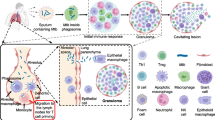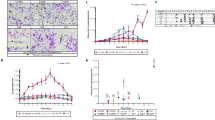Abstract
Owing to the importance and clinical diversity of Leishmania infantum, studying its virulence factors is promising for understanding the relationship between parasites and hosts. In the present study, differentially abundant proteins from strains with different degrees of virulence in promastigote and amastigote forms were compared using two quantitative proteomics techniques, differential gel electrophoresis and isobaric mass tag labeling, followed by identification by mass spectrometry. A total of 142 proteins were identified: 96 upregulated and 46 downregulated proteins in the most virulent strain compared to less virulent. The interaction between the proteins identified in each evolutionary form was predicted. The results showed that in the amastigote form of the most virulent strain, there was a large group of proteins related to glycolysis, heat shock, and ribosomal proteins, whereas in the promastigote form, the group consisted of stress response, heat shock, and ribosomal proteins. In addition, biological processes related to metabolic pathways, ribosomes, and oxidative phosphorylation were enriched in the most virulent strain (BH400). Finally, we noted several proteins previously found to play important roles in L. infantum infection, which showed increased abundance in the virulent strain, such as ribosomal proteins, HSP70, enolase, fructose 1,6-biphosphate aldolase, peroxidoxin, and tryparedoxin peroxidase, many of which interact with each other.







Similar content being viewed by others
References
Almeida-Bizzo JH, Alves LR, Castro FF, Garcia JB, Goldenberg S, Cruz AK (2014) Characterization of the pattern of ribosomal protein L19 production during the lifecycle of Leishmania spp. Exp Parasitol 147:60–66
Anderson L, Seilhamer J (1997) A comparison of selected mRNA and protein abundances in human liver. Electrophoresis 18:533–537
Avilán L, Gualdrón-López M, Quiñones W, González-González L, Hannaert V, Michels PA, Concepción JL. Enolase: a key player in the metabolism and a probable virulence factor of trypanosomatid parasites-perspectives for its use as a therapeutic target. Enzyme Res. 2011:932549. 2011
Castellano, L. R. Resposta immune anti-Leishmania e mecanismos de evasão. Vitae academia biomédica digital, v.25. 2005
Castro H, Rocha MI, Silva R, Oliveira F, Gomes-Alves AG, Cruz T, Duarte M, Tomás AM (2020) Functional insight into the glycosomal peroxiredoxin of Leishmania. Acta Trop 201:105217
Chang K (1980) Human cutaneous Leishmania in a mouse macrophage line: propagation and isolation of intracellular parasites. Science 209(4462):1240–1242
Clayton CE (2002) Life without transcriptional control? From fly to man and back again. Embo J 21:1881–1888
Cordeiro-Da-Silva A, Borges MC, Guilvard E, Ouaissi A (2001) Dual role of the Leishmania major ribosomal protein S3a homologue in regulation of T- and B-cell activation. Infect Immun 69(11):6588–6596
Cuervo P, de Jesus JB, Junqueira M, Mendonça-Lima L, González LJ, Betancourt L, Cupolillo E (2007) Proteome analysis of Leishmania (Viannia) braziliensis by two-dimensional gel electrophoresis and mass spectrometry. Mol Biochem Parasitol 154(1):6–21
Folgueira C, Carrión J, Moreno J, Saugar JM, Cañavate C, Requena JM (2008) Effects of the disruption of the HSP70-II gene on the growth, morphology, and virulence of Leishmania infantum promastigotes. Int Microbiol 11(2):81–89
Gygi SP, Rochon Y, Franza BR, Aebersold R (1999) Correlation between protein and mRNA abundance in yeast. Mol Cell Biol 19:1720–1730
Hombach A, Ommen G, MacDonald A, Clos J (2014) A small heat shock protein is essential for thermotolerance and intracellular survival of Leishmania donovani. J Cell Sci 127(Pt 21):4762–4773
Iborra S, Parody N, Abánades DR, Bonay P, Prates D, Novais FO, Barral-Netto M, Alonso C, Soto M (2008) Vaccination with the Leishmania major ribosomal proteins plus CpG oligodeoxynucleotides induces protection against experimental cutaneous leishmaniasis in mice. Microbes Infect 10(10–11):1133–1141
Mojtahedi Z, Clos J, Kamali-Sarvestani E (2008) Leishmania major: identification of developmentally regulated proteins in procyclic and metacyclic promastigotes. Exp Parasitol 119(3):422–429
Morimoto, R. I.; Tissieres, A.; Georgopoulos, C. The stress response, function of the proteins, and perspectives. Stress proteins in biology and medicine. Cold Spring Harbor Laboratory Press, New yor, pp 1–36, 1990
Neuhoff V, Arold N, Taube D, Ehrhardt W (1988) Improved staining of proteins in polyacrylamide gels including isoelectric focusing gels with clear background at nanogram sensitivity using Coomassie Brilliant Blue G-250 and R-250. Electrophoresis 9(6):255–262
Nuno Marques, Cabral S, Sá R, Coelho F, Oliveira J, Da Cunha JGS, Meliço-silvestre A (2007) Leishmaniose Visceral e infecção por vírus da imunodeficiência humana na era da terapêutica anti-retrovírica de alta eficácia. Acta Med Port 20(4):291–298
Paape, D.; Aebischer, T. Contribution of proteomics of Leishmania spp. to the understanding of differentiation, drug resistance mechanisms, vaccine and drug development. Journal of Proteomics P.1614–1624, 2011
Paape, D.; Lippuner, C.; Schmid, M.; Ackermann, R.; Barrios-Llerena, M. E.; Zimny-Arndt, U.; Brinkmann, V.; Arndt, B.; Pleissner, K. P.; Jungblut, P. R.; Aebischer, T. Transgenic, fluorescent Leishmania mexicana allow direct analysis of the proteome of intracellular amastigotes. Molecular & Cellular Proteomics, v.7.9, 2008
Pires SF, Fialho LC, Silva SO, Melo MN, Souza CC, Tafuri WL, Romero BO, Andrade HM (2014) Identification of virulence factors in Leishmania infantum strains by a proteomic approach. J Proteome Res 13:1860–1872
Romao S, Castro H, Sousa C, Carvalho S, Tomas A (2009) The cytosolic tryparedoxin of Leishmania infantum is essential for parasite survival. Int J Parasitol 39:1–9
Rory B, Guimarães F, Velloso J, Corrêa-Oliveira R, Ruiz J, Reis A, Resende D (2017) Immunoinformatics features linked to Leishmania vaccine development: data integration of experimental and in silico studies. Int J Mol Sci 18(2):371
Rosenberg HF (2008) RNase A ribonucleases and host defense: an evolving story. J Leukoc Biol 83(5):1079–1087
Shannon P, Markiel A, Ozier O, Baliga NS, Wang JT, Ramage D, Amin N, Schwikowski B, Ideker T (2003) Cytoscape: a software environment for integrated models of biomolecular interaction networks. Genome Res 13(11):2498–2504. https://doi.org/10.1101/gr.1239303
Silverman JM, Clos J, de Oliveira CC, Shirvani O, Fang Y, Wang C, Foster LJ, Reiner NE (2010) An exosome-based secretion pathway is responsible for protein export from Leishmania and communication with macrophages. J. Cell Sci. 123:842–852
Sinclair J, Metodieva G, Dafou D, Gayther A, Timms JF (2011) Profiling signatures of ovarian cancer tumour suppression using 2D-DIGE and 2D-LC-MS/MS with tandem mass tagging. Journal of Proteomics v 74
Souza CM (2005) As leishmanioses no município de Belo Horizonte: estudos entomológicos e biogeográficos visando à vigilância epidemiológica. Belo Horizonte, Instituto Oswaldo Cruz
Vonlaufen N, Kanzok SM, Wek RC, Sullivan WJ Jr (2008) Stress response pathways in protozoan parasites. Cell Microbiol 10(12):2387–2399
Walker J, Acestor N, Gongora R, Quadroni M, Segura I, Fasel N (2006) Comparative protein profiling identifies elongation factor-1beta and tryparedoxin peroxidase as factors associated with metastasis in Leishmania guyanensis. Mol Biochem Parasitol 145:254–264
Westman J, Taherzadeh M, Franzén CJ (2012) Proteomic analysis of the increased stress tolerance of Saccharomyces cerevisiae encapsulated in liquid core alginate-chitosan capsules. Plos one v 7
WORLD HEALTH ORGANIZATION (WHO). Magnitude of the problem. Available:<https://www.who.int/leishmaniasis/en/>. Access: 30 set. 2015
Yusupova, M.M., Yusupova, G.Z., Baucom, A., Lieberman, K., Earnest, T.N., Cate, J.H.,et al. Crystal structure of the ribosome at 5.5 Å resolution. Science 292 (5518), 883–896. 2001
Funding
This research was supported by the Fundação de Amparo à Pesquisa do Estado de Minas Gerais [PPM00129-17], Instituto Nacional de Ciência e Tecnologia de Vacinas [CNPq-573547/ 2008-4/FAPEMIG/MS-CBB, APQ 00077-09], and Rede Mineira de Biomoléculas [CCBRED00012-14]. The funders had no role in study design, data collection and analysis, decision to publish, or preparation of the manuscript.
Author information
Authors and Affiliations
Corresponding author
Ethics declarations
Competing interest
The authors declare that they have no competing interests.
Additional information
Section editor: Sarah Hendrickx
Publisher’s note
Springer Nature remains neutral with regard to jurisdictional claims in published maps and institutional affiliations.
Supplementary information
Supplementary Table 1
– Identified proteins using DIGE analysis. (XLSX 20 kb)
Supplementary Table 2
– Identified proteins using TMT analysis. (XLSX 23 kb)
Rights and permissions
About this article
Cite this article
Fialho Junior, L., da Fonseca Pires, S., Burchmore, R. et al. Proteomic analysis reveals differentially abundant proteins probably involved in the virulence of amastigote and promastigote forms of Leishmania infantum. Parasitol Res 120, 679–692 (2021). https://doi.org/10.1007/s00436-020-07020-8
Received:
Accepted:
Published:
Issue Date:
DOI: https://doi.org/10.1007/s00436-020-07020-8




